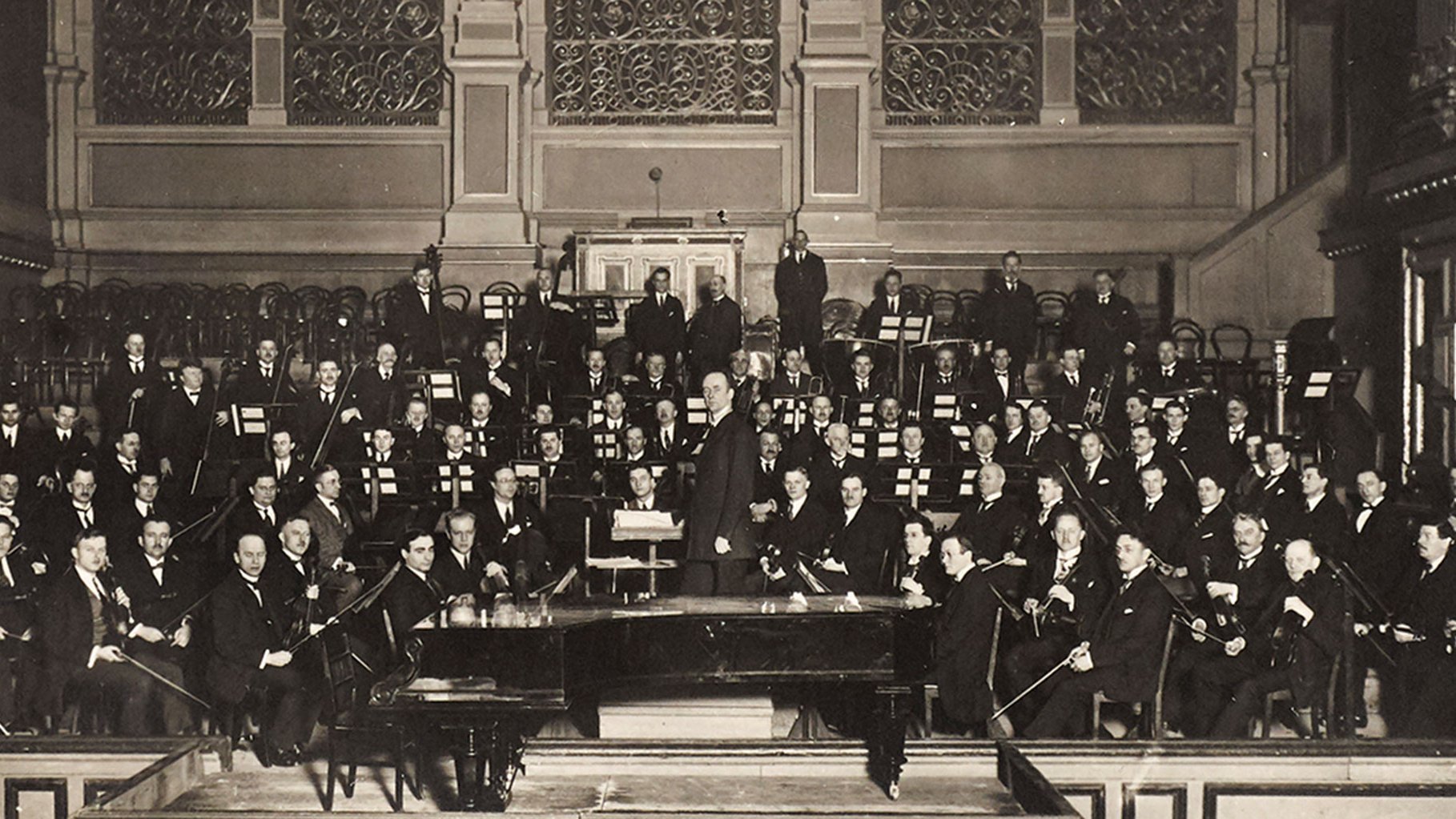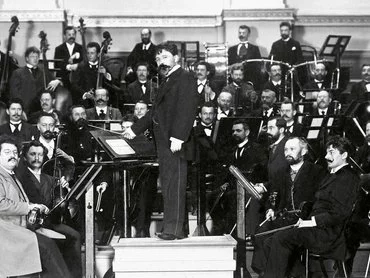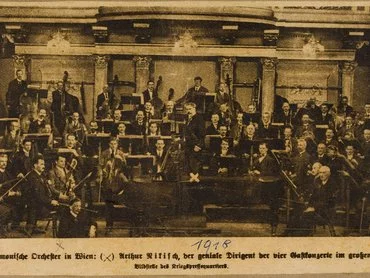- History
- Orchestra History

The 1920s began with an anniversary for the Berliner Philharmoniker: Arthur Nikisch had been its chief conductor for 25 years. During this time, the orchestra’s reputation – according to the publication Signale für die musikalische Welt – grew from year to year. For the anniversary concert on 1 March, the “audience came dressed in all their finery”, and there was a standing ovation which moved Nikisch deeply. But the next decade was not dominated by Nikisch, who died unexpectedly in January 1922, but by another conductor: Wilhelm Furtwängler, who as his successor was to lead the Philharmoniker to new artistic heights.
Another signifiant conductor of the decade was Bruno Walter, who had high hopes of succeeding Nikisch and who, as an almost permanent guest conductor, led his own so-called “master concert series” every year. Both conductors worked with the great soloists of the time: Edwin Fischer, Artur Schnabel, Fritz Kreisler, Joseph Szigeti, Bronisław Huberman, Richard Tauber, and Maria Ivogün were all among the orchestra’s guests. For us, big names such as Otto Klemperer, Erich Kleiber and Vladimir Horowitz were at the beginning of their careers at the time and made their Philharmoniker debuts in the 1920s.
Open to the avant-garde
Today, Wilhelm Furtwängler is regarded above all as a brilliant interpreter of the works of Beethoven, Brahms, Bruckner and Wagner, as well as certain works by Schubert, Haydn, Mozart, Schumann and Strauss. The extent to which his concerts emotionally gripped audiences and the press is shown by a review after the performance of Bruckner’s Ninth in 1926: “The performance of the work by Furwängler and the Philharmoniker was an experience that one does not forget, – sublime –, carried by sacred reverence, – especially shattering where the earthly struggle loses itself in the far distance...”. (Signale, November 1926)
During his tenure, however, Fürtwängler was also committed to the music of the time – not always to the delight of the audience. The performance of Stravinsky’s Le Sacre du printemps in 1924 and the premiere of Schoenberg’s Variations for Orchestra in 1928 both caused scandals. After the performance of the Schoenberg work, the audience whistled their disapproval for 20 minutes. Almost all the classics of Modernism can be found in the programmes of the time: Bartók, Schreker, Busoni, Korngold, Hindemith, Berg, Webern, Janáček and Kodály. Gustav Mahler’s work became increasingly recognised, and in the 1923/24 season, the Berliner Philharmoniker presented the first Mahler cycle in Germany under the direction of Klaus Pringsheim, a student of the composer. However, the orchestra’s programmes of that time also include many names of composers, conductors and soloists who are no longer known today.
Orchestra for hire
This is mainly because the Berliner Philharmoniker offered various “business models”: on the one hand, there were the prestigious concert series of Furtwängler, Walter and other conductors organised by the Wolff & Sachs concert agency. Then there were the so-called popular concerts, which took place on Sundays, Tuesdays and Wednesdays, as well as the folk and youth concerts that were subsidised by the city of Berlin. Finally, there were the many concerts for which the orchestra was bought in by soloists, composers, conductors, various concert agencies, choirs and music societies. At that time, a Berliner Philharmoniker provided their service between 500 and 600 times a year. “Joining the Philharmoniker requires great artistic idealism and a strong willingness to sacrifice one's artistic personality,” an unnamed musician revealed to a journalist of the newspaper the Berliner Tageblatt in 1922.
The journalist went on to say that cinemas and coffee houses could offer a top musician better economic opportunities than the Philharmoniker. Despite the high work commitment, the financial situation of the orchestra was disastrous. During the period of hyperinflation in Germany in the 1920s, it also lost the assets of its pension fund. During the “Golden Twenties”, the Philharmoniker struggled to survive – but this also made them creative: in order to improve their income, they undertook major tours together with Furtwängler of Germany, Switzerland and England almost every year and gave guest performances in Prague, Vienna and Budapest. The orchestra’s busy travel schedule was instrumental in increasing the international reputation of the orchestra and its charismatic chief conductor. Despite all their efforts, the Philharmoniker were facing ruin by the end of the decade. It was thanks to the persistence of Furtwängler and the orchestra’s board that a financial reorganisation took place in 1929, and that they committed the city of Berlin and the German Reich to larger subsidies.
1929: “Cocaine Scandal” and the debut of a world-class violinist
The year 1929 brought the Berliner Philharmoniker not only financial restructuring but also an unusual scandal: the Vienna-based composer Lise Maria Mayer, a pupil of Gustav Mahler, engaged the Berliner Philharmoniker for the premiere of her symphony “Cocaine”. Unfortunately, advance ticket sales were so poor that Lise Maria Mayer’s husband resorted to an unusual ruse: he placed a marriage advertisement in which a wealthy widow invited interested suitors to come to the concert in question for a first meeting. Many men who were willing to marry turned up, but the scam was discovered, a scandal ensued and the husband had to bear the financial consequences.
Artistically, the last year of the “Golden Twenties” was distinguished by something else: the Philharmoniker debut of violinist Yehudi Menuhin. Under the direction of Bruno Walter, the twelve-year-old musician – dressed in a white shirt, short trousers and woollen stockings – played Bach’s Violin Concerto in E Major, plus the Beethoven and Brahms concertos. A once in a century event. “Yehudi Menuhin is a person in whom higher revelation is reflected,” as one concert review said. “May a favourable star shine over the future of this talented boy.”

